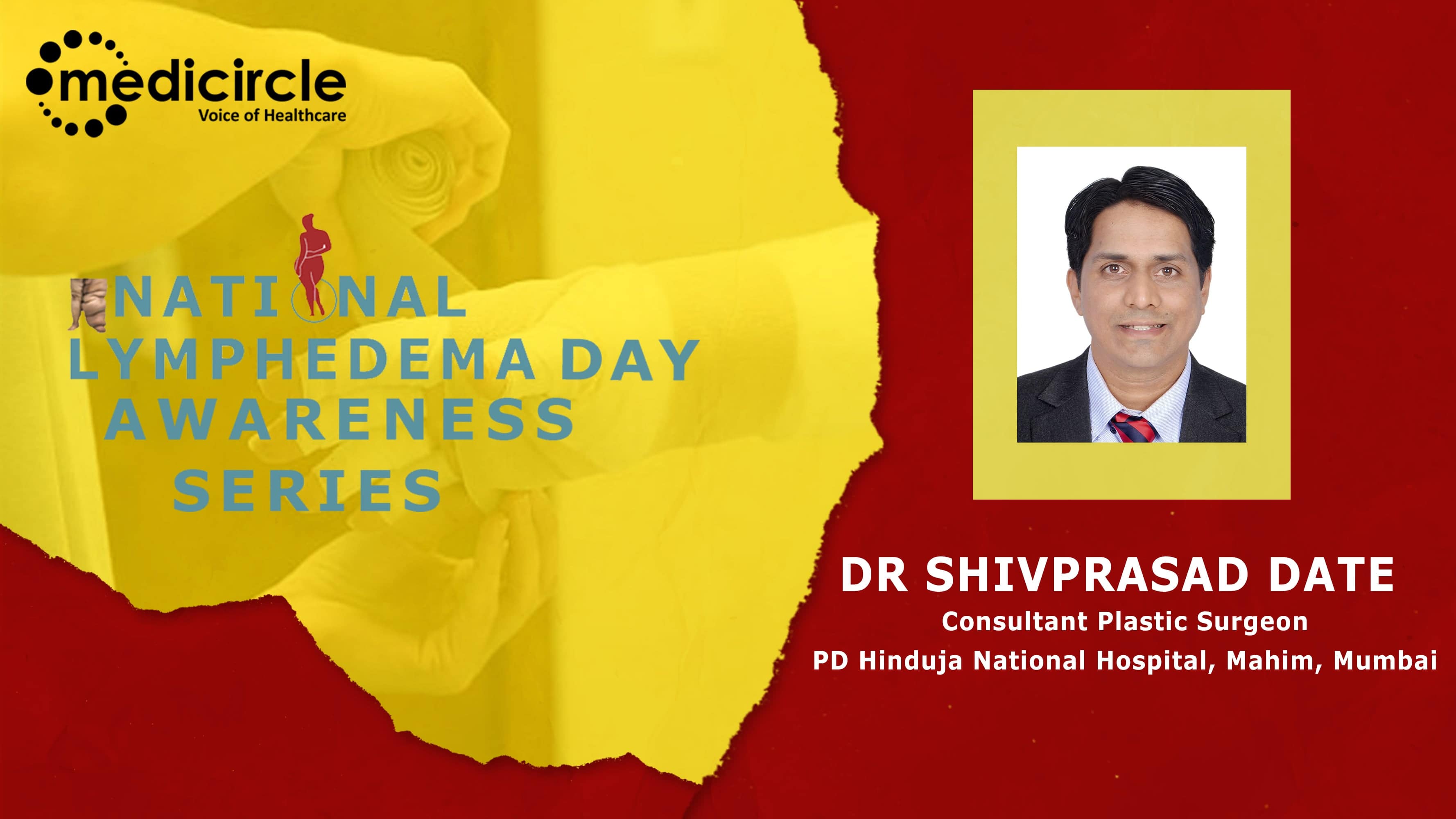Due to lack of public awareness and medical provider education, patients suffering from Lymphedema often go undiagnosed, and once they are diagnosed, they are still frequently unable to access care because of the not so pocket-friendly doctor-prescribed compression garments and devices. Compression for Lymphedema is what medication is for many other diseases indispensable. At Medicircle, through the Lymphedema Series, we aim to create knowledge on the subject directly through the experts so that people get a much transparent view about the condition.
Dr. Shivprasad Vijay Date has completed his DNB in Plastic and Reconstructive Surgery. He has vast international experience in various sub-specialties of plastic surgery. He has done pioneering research work in the field of lymphatic surgery and is actively involved in ongoing international projects. Dr. Shivprasad has a keen interest in facial and breast cosmetic surgery in general and rhinoplasty in particular. He also conducts monthly free plastic surgery camps at various rural centers. He has published various papers in national and international peer-reviewed journals and has been a faculty at D.Y.Patil Medical College, Mumbai.
Lymphedema Can Be Painless in Beginning
In simple terms, Lymphedema is a clinical condition arising secondary to obstruction of normal lymphatic drainage from any area of the body.
Many times, it is painless in the starting time. However, an alert patient may notice mild heaviness and pain on prolonged usage of the affected limb. However, some patients can have pain at the beginning itself possibly due to lymphangitis.
Post-Operative Malignancies Need to be More Cautious
A decade back, the first thing on a doctor's mind about the cause of lymphedema would be Filariasis. However, there has been an alarming rise in the cases of lymphedema which resulted from surgical lymph node clearance for malignancies. This is further aggravated by post-operative radiation.
First and foremost, one has to be aware of this thing especially in patients who have undergone lymph node clearance and radiation. Early prophylactic use of pressure garments has a pivotal role in pre-clinical and stage 1 lymphedema.
Surgeries Helpful in Lymphedema
Microsurgical intervention is being increasingly accepted by post-oncologic lymphedema patients. The technique which has shown promise is vascularised lymph node transfer which helps in reducing the frequency of inflammatory episodes and in longer-term also aids in limb size reduction. For an individual seeking limb size reduction, additional adipose tissue debulking can be added.
Another combined strategy is that of simultaneous vascularised lymph node transfer as well as lympho-venous anastomosis which will target size reduction as well as the decreasing frequency of inflammatory episodes.
(Edited by - Renu Gupta)

 “There Has Been Drastic Increase in Cases of Post-Operative Malignancies Resulted Lymphedema Cases. This is Further Aggravated by Post-Operative Radiation,†Dr. Shivprasad Date, Plastic Surgeon
“There Has Been Drastic Increase in Cases of Post-Operative Malignancies Resulted Lymphedema Cases. This is Further Aggravated by Post-Operative Radiation,†Dr. Shivprasad Date, Plastic Surgeon










.jpeg)



.jpg)





.jpeg)

.jpg)





.png)

